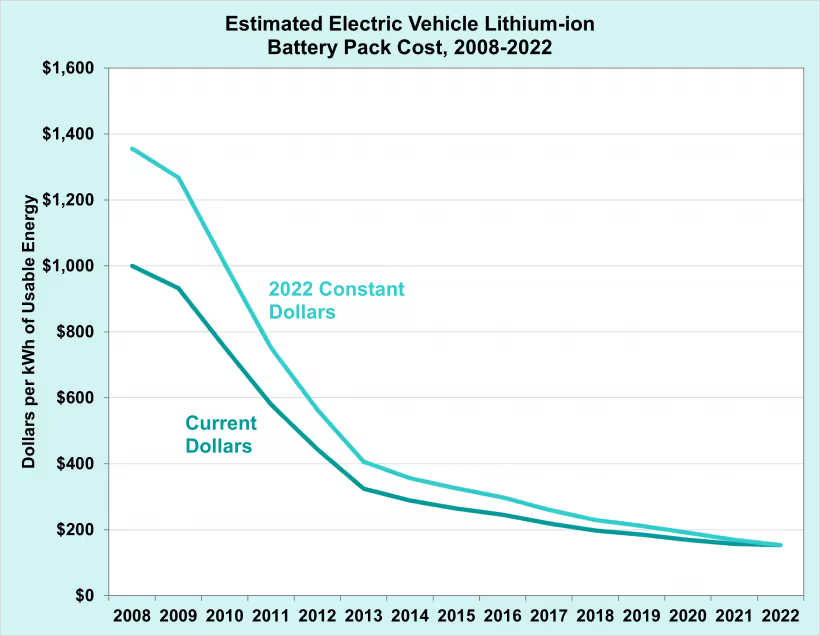Breaking down EV vs ICE vehicle maintenance
EVs often have lower maintenance costs than internal combustion engine (ICE) vehicles. This is one of the factors that can lead to a lower total cost of ownership for EVs, and make a compelling business case for electrification. At first glance, EVs having lower maintenance costs makes sense: ICE vehicles have many more internal parts that are subject to wear and tear from the combustion of fuel, while EVs directly draw power from a battery. The reality is more nuanced; to keep costs low, it is critical to understand when and why EV maintenance can be lower than ICE vehicle maintenance, and vice versa.
In this article, we’ll break down these maintenance costs, exploring the differences between EVs and ICE vehicles.
How ICE vehicle maintenance can be more expensive than EV maintenance
First, EVs contain fewer parts that require regular replacement and maintenance, in comparison to ICE vehicles. A class 8 diesel truck needs a maintenance check at least every 10,000 miles. Since class 8 diesel drayage trucks spend more time idling, these vehicles may need a maintenance check twice as often.
When a diesel truck goes in for a routine preventative maintenance checkup, a mechanic goes through a long checklist. The vehicle may need any of the following repaired or replaced due to detected problems: engine oil, tires, air filter, spark plug, transmission, internal fluids, and more. Many of these components simply don’t exist in an EV, so they never need to be replaced. This can cut thousands off of maintenance costs per vehicle per year alone.
The diagram below from a 2021 Argonne National Lab study shows the differences in maintenance costs, broken down by individual vehicle components. As seen, the largest contribution to lower maintenance costs for EVs is simply the lack of certain vehicle components, such as the transmission and combustion engine-related filters and fluids.

Second, regenerative braking in EVs results in less wear and tear on the brake pads. EVs automatically engage in regenerative braking whenever the acceleration pedal is lifted. Regenerative braking draws energy from the movement of the wheels back into the battery, slowing down the vehicle without the driver needing to press on the brake pedal. If drivers are trained on how to take advantage of regenerative braking, the brake pads will need to be replaced far, far less than in a comparative ICE vehicle.
This data shows that EVs can be up to 40% cheaper to maintain over the course of a vehicle lifecycle than a comparative ICE vehicle, which can net out to $1000s of savings per vehicle for a fleet.
How EV maintenance can be more expensive than ICE maintenance
While studies have shown that EV maintenance is generally less expensive than ICE maintenance, there are a few factors that may impact the expected cost savings.
First, individual EV repairs can be more expensive than ICE repairs, even if EVs need to be repaired at a lower frequency than ICE vehicles. EVs are relatively new to the market; replacement parts can be harder to find and more expensive than the analogous part in ICE vehicles, especially with supply chain constraints. That said, repair expenses were taken into account in the Argonne study cited above, so even with more expensive replacement parts, the balance still remains in EVs’ favor. However, we’ve heard from several fleets that repair timelines for EVs can be longer than for comparable ICE vehicles, so plan accordingly.
Second, if the vehicle is used past the battery warranty, the battery may need to be replaced. A typical commercial EV battery warranty is 8 years. Depending on your intended vehicle replacement cycle, the battery warranty may run out before you intend to replace the vehicle. Replacing a battery can be fairly expensive; a Bloomberg New Energy Finance model estimates the cost at around $100/kWh in 2023, which amounts to $5,000-$15,000 for light duty vehicles and $30,000-$40,000 for class 8 vehicles. That said, EV batteries only degrade around 10-20% over a timespan of 5 years, and many commercial vehicles are retired ahead of that 8 year warranty expiration date. Battery prices are also expected to decrease over time; as seen in the diagram below, per kWh battery costs have dropped by 90% over the past 15 years, and are expected to continue.

Third, tires on EVs may need to be cycled more frequently. EV batteries are far heavier than the internals of an ICE vehicle; Goodyear found that traditional tires can wear up to 30% faster on EVs, increasing cost per mile by about 4 cents. In response, tire companies such as Goodyear have begun releasing specialized tires for EVs, which are built to last longer, but are more expensive to purchase.
Conclusion
The Argonne National Labs study cited earlier in this article is one of the most well-known studies on EV maintenance. However, the study was published in 2021, before many medium and heavy duty van and truck models were released to market. As a result, all of the medium and heavy duty data cited in the study comes from bus fleets, which have different duty cycles than other types of medium and heavy duty vehicles. New EV models are hitting the road this year en masse, and as these EVs are deployed, we expect new data to come out on comparative maintenance costs and total cost of ownership.
As a result, fleet managers must look to the data from their own fleets as the ultimate source of truth and use that data to keep costs low. For example, if drivers aren’t trained on how to take advantage of regenerative braking, your fleet won’t achieve the expected cost savings from brake pad replacement, impacting Total Cost of Ownership (TCO).
If you would like to monitor and improve your EV fleet operations, Flipturn is here to help.
We’ll help you access cross-system visibility needed to answer questions about costs, improve EV efficiency, and make the right operational decisions faster.






